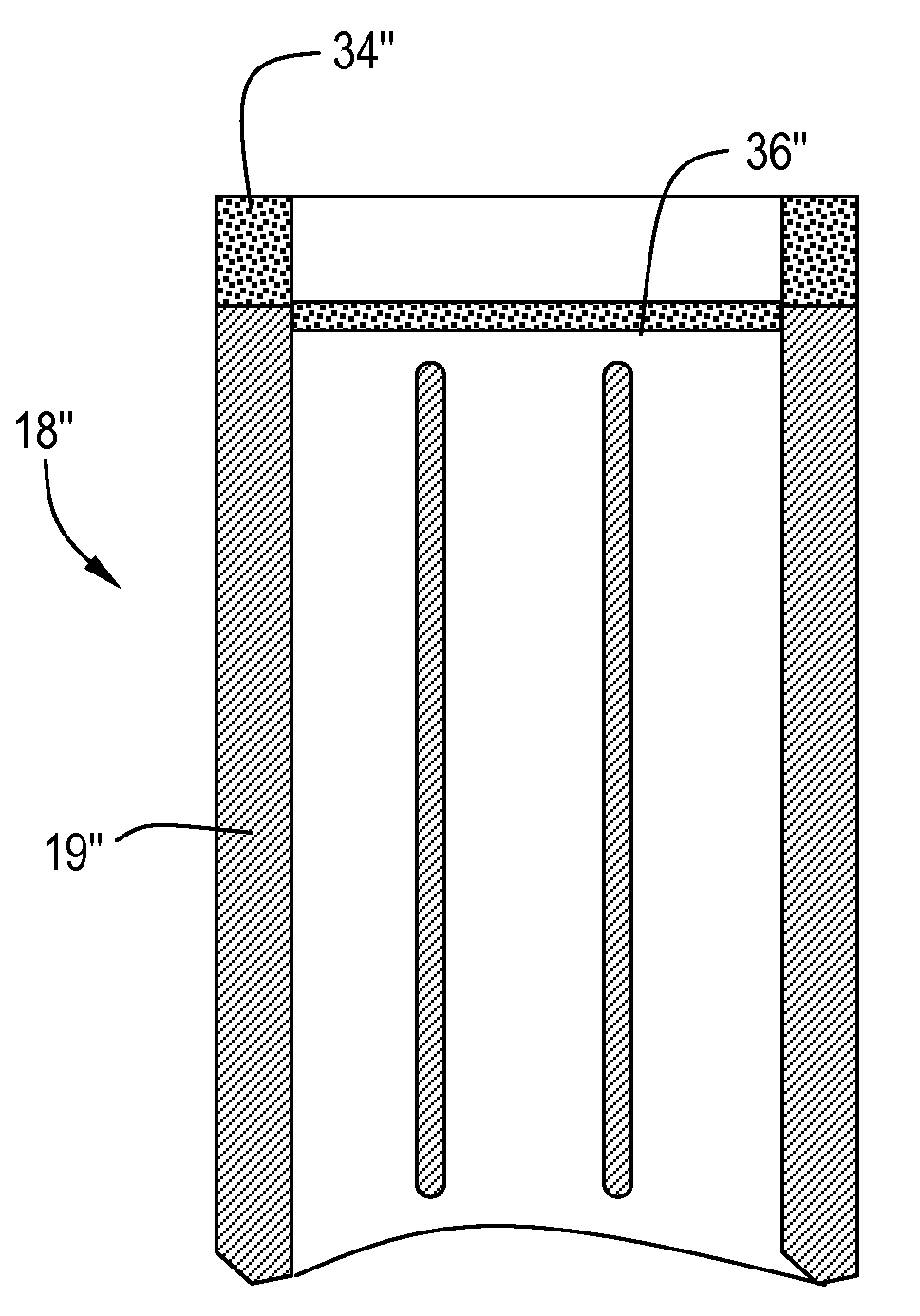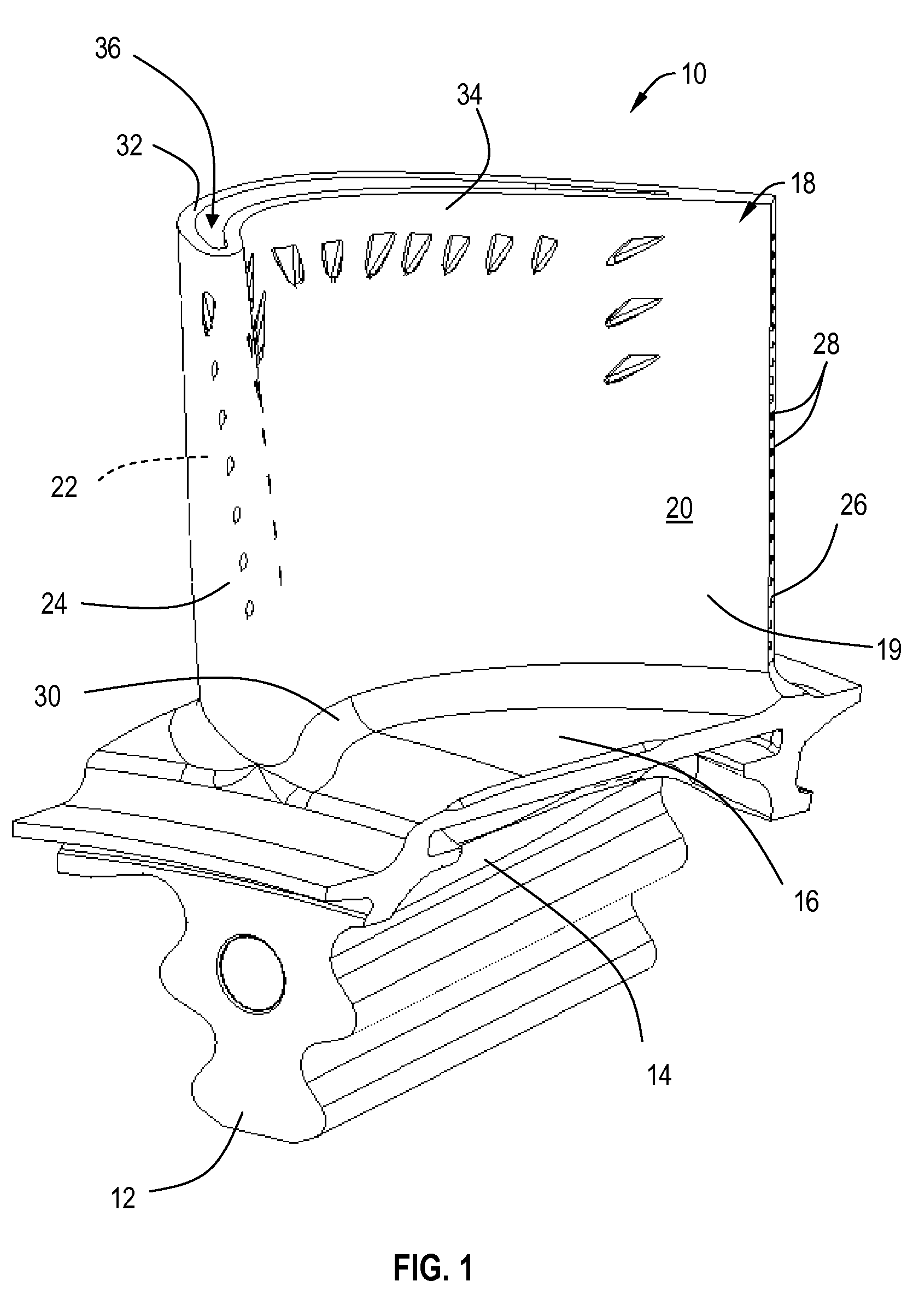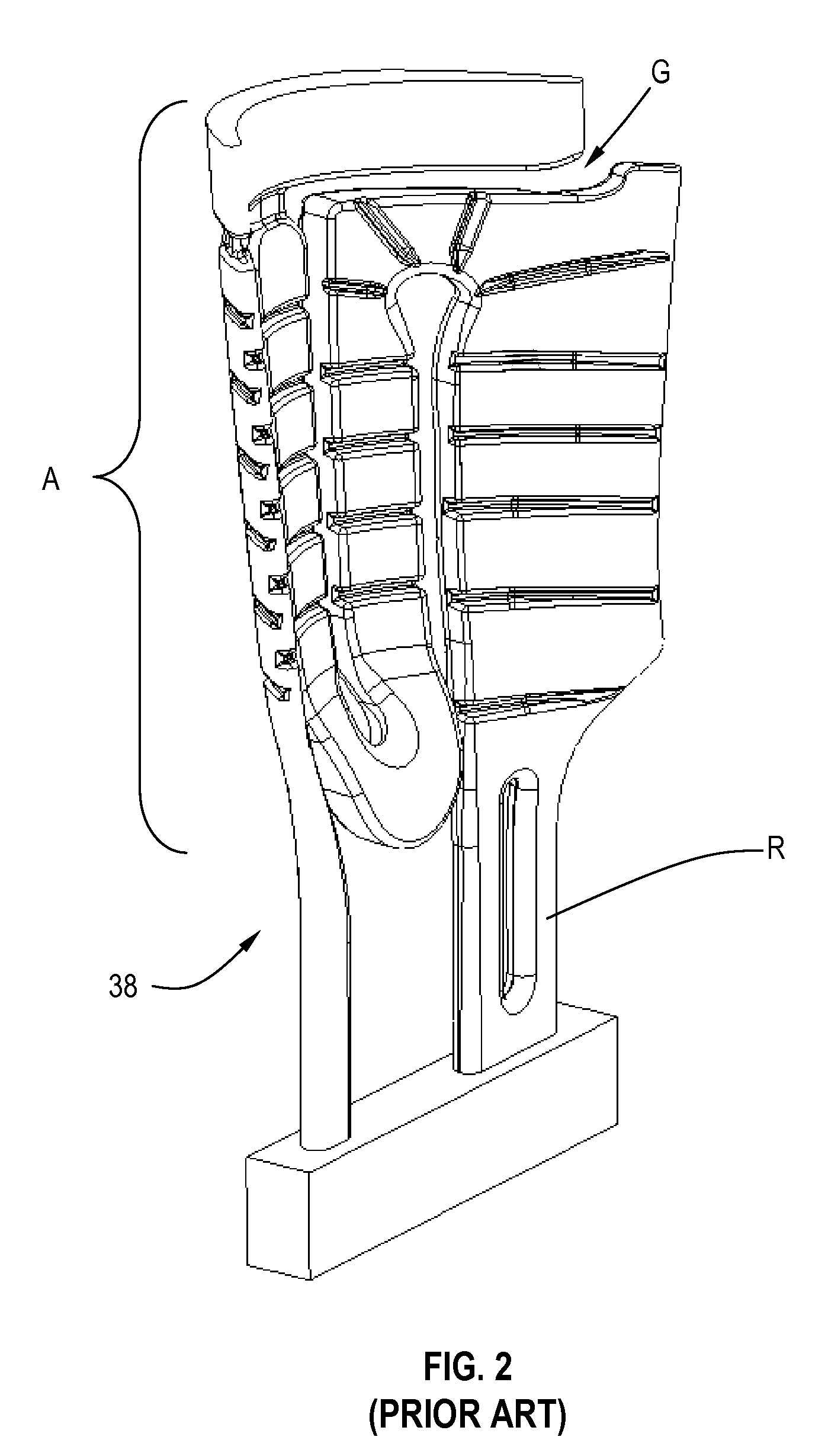Method of fabricating turbine airfoils and tip structures therefor
- Summary
- Abstract
- Description
- Claims
- Application Information
AI Technical Summary
Benefits of technology
Problems solved by technology
Method used
Image
Examples
Embodiment Construction
[0028]Referring to the drawings wherein identical reference numerals denote the same elements throughout the various views, FIG. 1 illustrates an exemplary turbine blade 10. The turbine blade 10 includes a conventional dovetail 12, which may have any suitable form including tangs that engage complementary tangs of a dovetail slot in a rotor disk (not shown) for radially retaining the blade 10 to the disk as it rotates during operation. A blade shank 14 extends radially upwardly from the dovetail 12 and terminates in a platform 16 that projects laterally outwardly from and surrounds the shank 14. A hollow airfoil 18 extends radially outwardly from the platform 16. The airfoil 18 has an outer wall 19 comprising concave pressure side outer wall 20 and a convex suction side outer wall 22 joined together at a leading edge 24 and at a trailing edge 26. The trailing edge 26 may incorporate trailing edge cooling passages such as the illustrated holes 28. The airfoil 18 has a root 30 and a t...
PUM
| Property | Measurement | Unit |
|---|---|---|
| Thickness | aaaaa | aaaaa |
| Length | aaaaa | aaaaa |
| Pressure | aaaaa | aaaaa |
Abstract
Description
Claims
Application Information
 Login to View More
Login to View More - R&D
- Intellectual Property
- Life Sciences
- Materials
- Tech Scout
- Unparalleled Data Quality
- Higher Quality Content
- 60% Fewer Hallucinations
Browse by: Latest US Patents, China's latest patents, Technical Efficacy Thesaurus, Application Domain, Technology Topic, Popular Technical Reports.
© 2025 PatSnap. All rights reserved.Legal|Privacy policy|Modern Slavery Act Transparency Statement|Sitemap|About US| Contact US: help@patsnap.com



